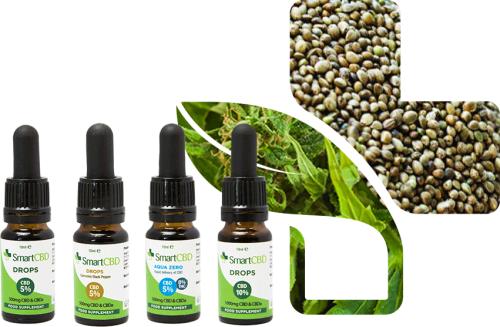
For thousands of years, the cannabis plant has been used as a source of health improvement, and people are embracing it as a way to boost their wellbeing even today.
CBD has grown more and more popular in recent years. This natural compound comes from the cannabis plant, and has been associated with a wide range of health benefits, from joint pain and arthritis to anxiety and epilepsy.
What exactly is full spectrum CBD?
The cannabis plant is full of many different molecules and products. These are known as cannabinoids, and are naturally found within the plant.
CBD can be obtained as a broad spectrum product, a full spectrum product or as a pure product. Many people choose to option for full spectrum CBD due to the potential added benefits these items carry.
But what does full spectrum CBD mean? Well, in short, full spectrum CBD is CBD which contains all the cannabinoids that are found in the cannabis plant in the natural world, rather than just CBD. The latter would be a pure CBD product.
Full spectrum CBD products benefit from what is known as the ‘entourage effect’. This describes the increased effectiveness of full spectrum products due to the many different cannabinoids working in synergy with each other. Because of this, full spectrum CBD products can often be the most effective.
So what else is present in full spectrum CBD products apart from CBD? Well, there are actually more than 100 cannabinoids present in the hemp plant. CBD and THC are the most well-known of these, but there are many others and here we’re going to give you more information about some of the most abundant among these.
CBD
CBD is a common compound in the cannabis plant, and has been associated with a range of potential health benefits. In fact, research has shown that CBD is a natural anti-inflammatory substance, and could help to promote homeostasis within the body.
Unlike THC, CBD is not associated with the high feeling which the cannabis plant is commonly associated with. CBD has been known to be used in order to treat a range of physical and mental health concerns, including arthritis, anxiety, depression, epilepsy, PTSD and insomnia.
THC
THC, or tetrahydrocannabinol, is the second most common cannabinoid found in the hemp plant. It is found in high quantities within hemp’s sister plant, marijuana, and is responsible for producing the stoned or hazy effect associated with this plant.
Many people are put off CBD products because they think all cannabis compounds cause a psychoactive response, but this is not true. The legal distinction between hemp and marijuana is the amount of THC. Anything more than 0.3% is considered marijuana, while anything less is hemp. This means that CBD products will not create a psychoactive effect, and THC is only present to bolster the psychoactive effect.
CBG
Like CBD, CBG (cannabigerol) is a non-intoxicating cannabinoid. In fact, it is the parent compound of both THC and CBD. Enzymes in the cannabis plant break down CBG into one of these compounds.
Studies have shown that CBG could have an impact on certain aspects of your health and wellbeing, including TBD, bladder problems, glaucoma and Huntington’s disease – although much research is still to be done to substantiate this.
CBN
As a minor cannabinoid, CBN (cannabinol) has been shown to potentially help with pain relief and stimulating appetite. It has been rigorously studied for its effect as a sedative. It has been shown to create a relaxed feeling in some users. Significant amounts of CBN could also help with fighting insomnia, it is thought.
Brands like SmartCBD deliver the highest quality full spectrum CBD to households across the UK.
Post Your Ad Here
Comments